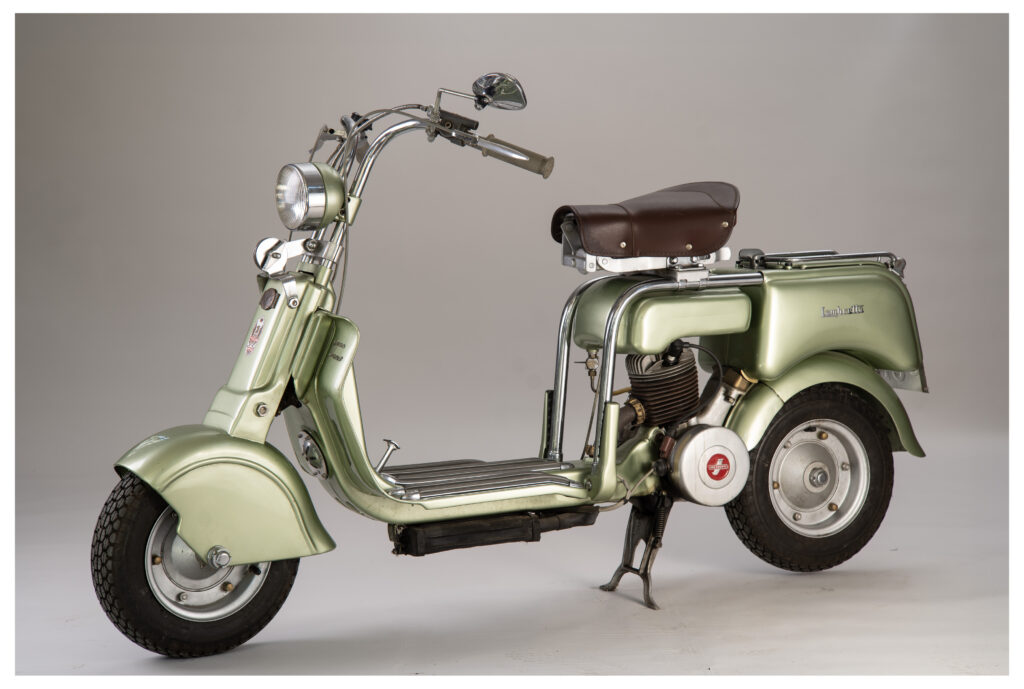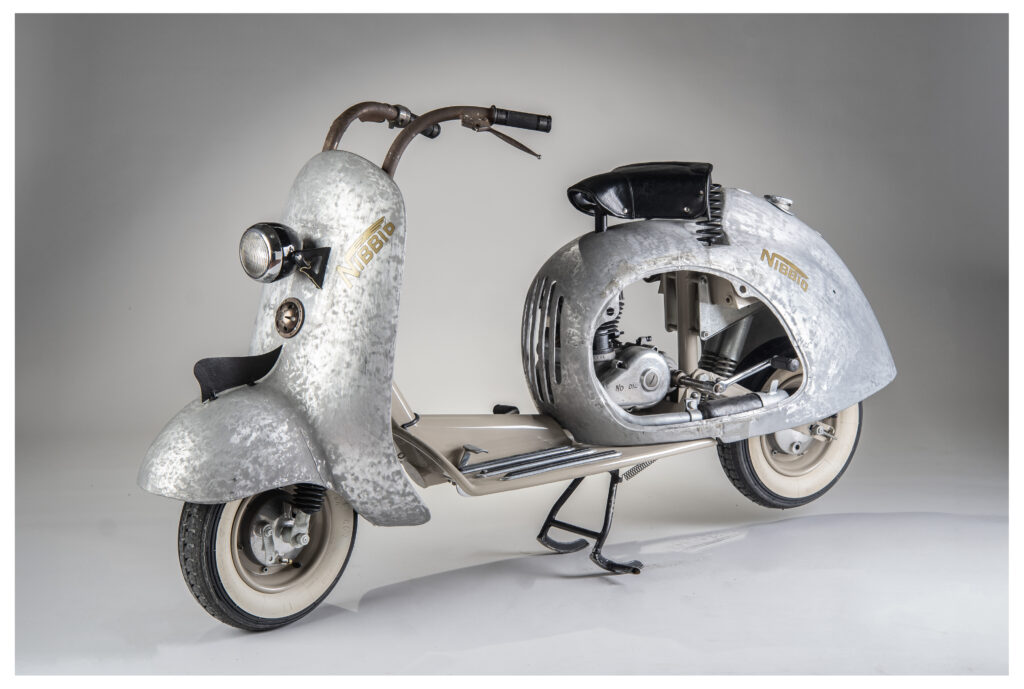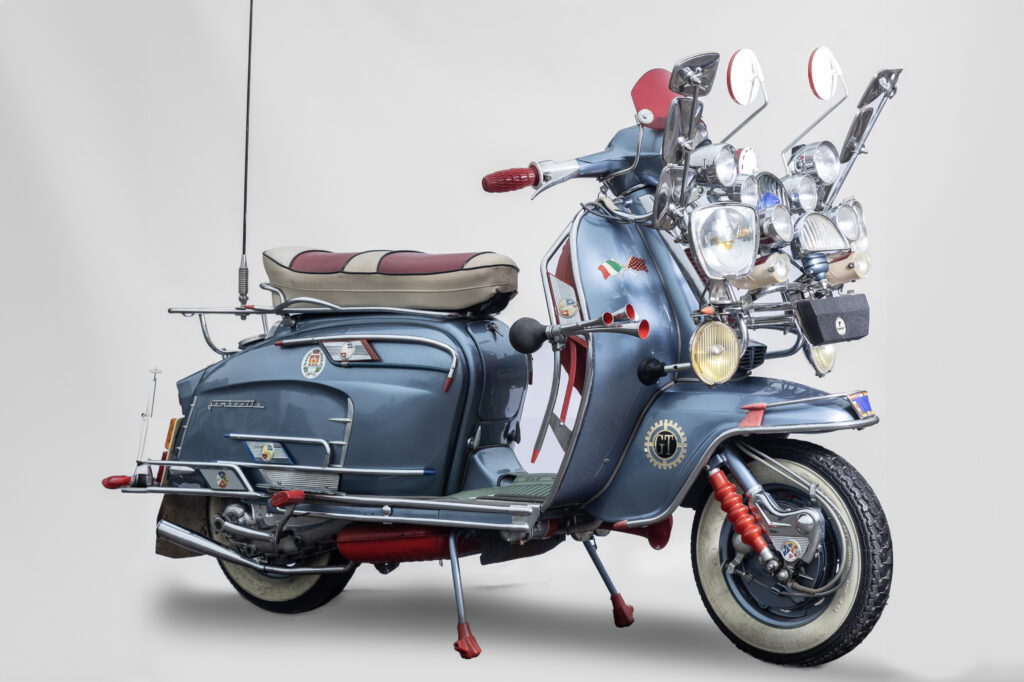A celebration of Italian excellence at the Villa Manin
From 08.02 to 04.05.2025
Scooter Italia 1945-1970 is the exhibition that pays homage to one of the most iconic symbols of Italian design and engineering, offering visitors an immersion in the atmosphere of an era that profoundly marked Italian history and cultural identity. Scooter Italia 1945-1970 – organised by the Friuli Venezia Giulia Regional Agency for Cultural Heritage (ERPAC) and curated by Paolo Capuzzo – is part of the schedule of ‘GO!2025&Friends’, the programme of events connected to the official programme of ‘GO!2025 Nova Gorica – Gorizia European Capital of Culture’.
Through a careful selection of about 50 models from private collectors in the region, Scooter Italia 1945-1970 is an unmissable opportunity to discover a world icon, highlighting how these vehicles accompanied the social and economic change of the country. The retrospective retraces 25 years of motoring innovation, focusing on the central role played by Italian companies – from the most famous such as Piaggio and Innocenti, to less famous ones such as Rumi and Gianca – that were able to transform a popular means of transport into a symbol of modernity, culture and creativity.
The exhibition will be developed in two temporal phases that will trace the transformation of the scooter’s role. From the post-war period to the early 1960s, when the scooter represented the main means of transport for work and for Italy’s rapid transition from a society and from the early 1960s to its end, when the moped became the protagonist of youth mobility, thanks to its association with subcultures, accompanying moments of leisure, travel and new forms of sociability.



“In post-war Italy, scooters represented a valuable response to the growing need for mobility in a rapidly changing country. Their diffusion left a deep impression on the collective imagination: cinema, literature and music celebrated them as emblems of freedom and modernity.’
Paolo Capuzzo, curatore della mostra Tweet
The path of the exhibition will interweave different narrative dimensions: from the production and design made in Italy, with a focus on international success and corporate strategies, to the commercial promotion of the scooter. The evolution of the social use of the vehicle that revolutionised Italians’ everyday life and mobility will be explored, as well as the scooter’s cultural image, immortalised in magazines, cinema and songs.
The exhibition will feature photographs from the Alinari Archives and the Fiera Milano Archives, as well as period films from the Archivio Nazionale Luce and the Archivio Nazionale Cinema Impresa in Ivrea, and original posters from the Salce Collection together with reproductions from the Piaggio Foundation.
‘Ease and speed in doing a thing do not give the work lasting solidity nor the precision of beauty,’ argued Plutarch. And, in fact, in the evident beauty that transpires in every single piece on display in this exhibition is also contained the complexity and fatigue of the restoration work carried out by the owners, all from our region, who, with painstaking passion and love, have dedicated their time to researching and assembling the appropriate pieces to restore each of these scooters to their original uniqueness. An exhibition that is beautiful to see, therefore, but also beautiful to listen to for the history - all Italian - that it will be able to tell its visitors, a history that concerns us all, our parents, our grandparents, but also our children and grandchildren who will be able to find a part of their roots in that history. This is the first major exhibition that the Friuli Venezia Giulia Region will open in 2025, the year in which Nova Gorica and Gorizia are European Capital of Culture. So let us metaphorically jump into the saddle of each of these scooters and set off together towards the cultural renaissance of our region.
Mario Anzil, Vicepresidente e Assessore alla Cultura e allo Sport della Regione Friuli Venezia Giulia Tweet


